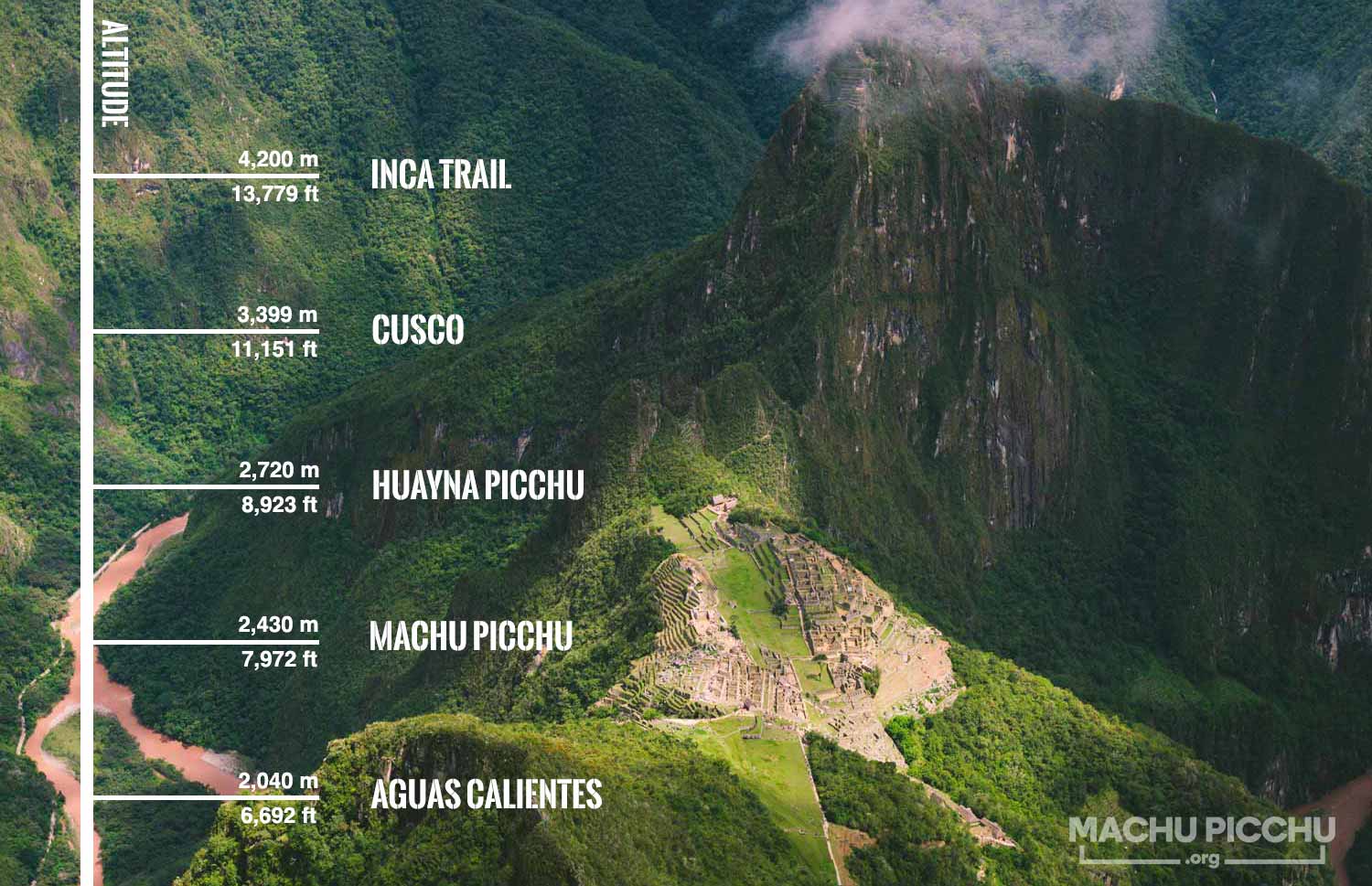Altitude of Machu Picchu
Machu Picchu is one of the 7 wonders of the world, and that is why there are thousands of people who want to visit. If you plan to visit, keep in mind that you will need to take some time to acclimatize to altitude before planning your hike to the archaeological site.
Altitude of Machu Picchu
No matter how fit you are, this UNESCO world historic site is located at an altitude of 2,430 meters (7,972 feet) above sea level. Cusco, the gateway city before your trek to Machu Picchu, is located at an elevation of 3,399m (11,152 feet) above sea level.

This is significantly higher than the Inca citadel. Acute altitude sickness of the mountain typically occurs at altitudes of 2,500m (8,000 feet) or more, so if you plan to go to Cusco and Machu Picchu, you may be at risk of altitude sickness.
The easy way to acclimatize to the altitude of Machu Picchu
To reduce your risk of altitude sickness, the best thing you can do before traveling through Cusco or Machu Picchu is to spend the extra time allowing your body to acclimatize to its new altitude before any serious sightseeing visit.
When you are at higher altitudes, the air pressure decreases and there is less oxygen available.
Arrival in Cusco and Rest
When you arrive in Cusco, particularly if you have flown directly from Lima, you should try to reserve at least 24 hours to acclimatize to the new altitude, during which you should take it easy.
Lima is located at sea level, so flying directly from Lima to Cusco implies a significant increase in altitude in very little time, giving your body no chance to adapt during the trip.
In addition, new visitors arriving by plane have the option of visiting the towns near Cusco in the Sacred Valley.
These villages are at slightly lower altitudes, which provides a milder form of acclimatization before returning to Cusco.
If you take a bus from Lima to Cusco, which is approximately 22 hours, your body will have a more gradual period of adjustment, and you should be able to manage the altitude in Cusco once you arrive.
Acclimatize to Machu Picchu
Huayna Picchu, the peak that rises above the archaeological site, rises to a height of 2,720 meters (8,920 feet) above sea level.
Once you have acclimatized properly in Cusco or the Sacred Valley, you should have no serious problems with the altitude at Machu Picchu.
You may still feel breathless as you walk through the site, but the risk of altitude sickness will be minimal.
If you feel breathless while walking the numerous stone steps at Machu Picchu, don’t worry; it’s perfectly normal.
Generally, you can spend hours wandering freely through most of the site. Guardians can make you move in certain areas, but there’s no need to rush.
Machu Picchu is open from 6 a.m. to 5 p.m., so you should have plenty of time to explore to your liking.
If you are with a group of tourists, you should be given at least one hour for independent exploration after the guided tour.
Symptoms of altitude sickness
If you begin to feel symptoms of high-altitude illness while you are in the area, tell your guide or seek medical attention immediately.
These symptoms include headache, dizziness, nausea, vomiting, fatigue, shortness of breath, trouble sleeping, or decreased appetite.
Symptoms usually appear within 12 to 24 hours of reaching a higher elevation and then improve in a day or two as your body adjusts to the change in altitude.
Be Prepared for the Altitude
Don’t forget to bring a bottle of water, a hat, sunscreen and a raincoat or poncho with you to Machu Picchu.
While the elevation of Machu Picchu can take your breath away, the preparation for the whimsical weather there is certainly just as important.

Thank you for this great advice and reminders!
Hola, quería saber tu precio..
Escríbenos a [email protected]